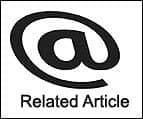
|
| Paul Findly, MBA, is director of marketing at CareCredit, Costa Mesa, Calif. |
Just as your cholesterol numbers give you insight into the health of your heart, your financial numbers give you insight into the health of your practice. Although there are other areas of your business that seem to be more interesting and important, your financial numbers will help guide you to new levels of profitability when you invest the time to understand what they mean, how they impact your business, and ultimately, how to use the information when making decisions. There are three financial statements you can use for your planning efforts that act as a budgeting tool, an early warning system, a problem identifier, and a solution generator.
1. Your Balance Sheet
The most basic financial statement is your balance sheet. The balance sheet is like a photograph, serving as a real-time reminder of your current financial health. At its most basic level, a balance sheet compares assets and liabilities.
Assets. Assets are what you own that is valuable to the company, including cash and accounts receivable. Assets also include things you own that can be sold or used to make products or services, such as inventory and equipment. Assets include current (those you can convert to cash within 1 year such as accounts receivable), noncurrent (those that will take you more than a year to sell), and fixed (equipment used to support your operations) assets.
Liabilities. Liabilities are what you owe, including accounts payable, future income taxes, and long-term debt. Liabilities are typically categorized into current (those to be paid within a year) and long-term (those that will require more than a year to pay, such as leases).
Shareholder equity or net worth. Obviously you want your assets to exceed your liabilities, resulting in a positive net worth. On your balance sheet, your assets must equal or “balance with” your liabilities plus your shareholder equity.
Assets – Liabilities = Net Worth
2. Your Income Statement
Your income statement provides you with details on where your money came from and where it goes (your income and expenses) and your bottom-line earnings (or loss) over a period of time, usually a year or a portion of a year. Reading your income statement is like taking a series of steps: one step leads to the other. Let’s start at the top:
Gross Revenue or Sales. At the top of your income statement is your gross revenue or sales, which represents the amount of money brought in from sales of products or services. For example, this amount includes sales of hearing aids, batteries, ancillary products, and any services or time that you bill to patients. The term “gross” indicates that expenses have not been deducted from this amount.
Cost of Goods Sold. The next “step” down is cost of goods sold, which are the direct costs of the products or services you sell. When you subtract your cost of goods sold from your gross revenue, the resulting figure is your net revenue. For example, if you sold a hearing aid for $2,200 (your gross revenue) and paid the hearing aid manufacturer $900 for that instrument (your cost of goods), you would show net revenue or net profit of $1300.
Gross Revenue – Cost of Goods Sold = Net Revenue
Operating Expenses. The next step down on your income statement is a category called operating expenses, which includes all expenses that supported your practice’s operations over that period of time, such as salaries, rent, electricity, and marketing. These are expenses that cannot be directly linked to the products or services you sold. When you subtract your operating expenses from your net revenue, the resulting figure is your net operating profit.
Net Revenue – Operating Expenses = Net Operating Profit
Interest Income/Expenses. From your net operating profit, you either add interest income (from investments or bank accounts) or subtract interest expenses (eg, from interest on loans, equipment leases).
Taxes. Finally, you deduct income taxes and you arrive at your “bottom line” or net profit/net loss.
3. Your Cash Flow Statement
Many profitable companies—including hearing care offices—have gone out of business because of poor cash flow. Your cash flow statement indicates how the financial condition of your company has changed over a period of time, usually structured in 4 quarters, by showing your sources and uses of cash. There are typically two sections in your cash flow statement:
- Cash flows from operative activities, which include things like sales of hearing aids and services, payroll, and rent;
- Cash flows from other activities, which could include any type of cash you receive or pay out, such as interest on a loan.
If your sources of cash exceed your uses over that period of time, you have positive cash flow—you received more money than you spent. If your use of cash exceeds your sources, you have negative cash flow, which could be an indicator of multiple problems, like overstaffing, not enough business, or carrying too much inventory.
Making Decisions by the Numbers
The numbers provided by these three reports are valuable tools and can be used together to give you information to make decisions that positively impact your practice and profitability. From your balance sheet you can quickly identify if you have positive or negative net worth. But for this financial snapshot to provide meaningful information, it needs to be compared with other snapshots, such as the previous quarters’ balance sheets. From this comparison, you can quickly identify trends that may require further investigation.
If your net worth suddenly decreases dramatically, you can quickly identify if assets have decreased or liabilities have increased, then focus your investigation in the appropriate areas.
For example, let’s look at the cost and impact of carrying accounts receivable. One of the best ways to analyze the information on your financial statements is by using financial ratios to get a closer look at performance, by comparing one number to another. Your collection ratio is one of the many financial ratios that can be helpful to measure operating efficiency.
Collection Ratio: The number of days’ sales uncollected in your average accounts receivable. This ratio is calculated by taking the average accounts receivable from the balance sheet and dividing it by the average daily sales from the income statement, or:
Avg accounts receivable ÷ Avg daily sales = Collection ratio
If your ratio shifts and you find that it is taking longer and longer to collect payment from patients on hearing aid sales already made (which affects cash flow), you may want to consider outsourcing financing to a company that provides you with immediate payment, such as CareCredit. As you use your income statement and cash flow statement to investigate more deeply, you may even find that the cost of carrying the accounts receivable—including collection and bad debt, as well as the impact on cash flow—may further support the decision to outsource financing.
You can also compare your financial statements to previous periods or to industry/competitor benchmarks to identify problems or issues, and to attain guidance in decisions regarding hiring, marketing, new equipment purchases, pricing strategies, and billing and collection policies.
For example, let’s say your income statement and cash flow statement indicate a decrease in sales, confirming your sense that the number of patients you’ve been seeing has been decreasing. On further investigation, you discover that a new practice in your part of town is using aggressive marketing. This would help you determine if your current marketing, patient retention, and referral programs are working hard enough for you, and may prompt you to identify new ways to improve your activities so you can continue to grow your patient base.

|
| “Selling in the Professional Setting,” by Kelly Riggs. February 2006 HR.
“Toast of the Town: Three Practices Share Success Strategies,” by Danielle Campbell-Angah. October 2006 HR. |
Or maybe you discover that a valuable and significant physician referral relationship has suddenly changed, leading you to expand your referral network or proactively nurture your existing one to maintain an appropriate new-patient flow level.
If sales continue to show a downward trend, you may survey patients who did not purchase after consultation. If you find that they believe your prices are too high, it may lead you to consider a low monthly payment program, so patients can get the care they need immediately while comfortably paying over time with a low-interest plan.
You can also use financial information—a realistic view of your current and past performance—to develop strategies and to help achieve your personal and professional financial goals. For example, if you want to earn $150,000 per year, by using the sales and expense trends, you can identify how much you need to increase sales and/or decrease expenses in order to achieve your goals.
Every business owner needs to understand and use financial numbers to develop a historical perspective of performance and to create an ongoing road map to improve results and profitability. So the next time your accountant wants to “go over your numbers,” think of it as investing time in the success of your business.
Correspondence can be addressed to HR or Paul Findly at .





